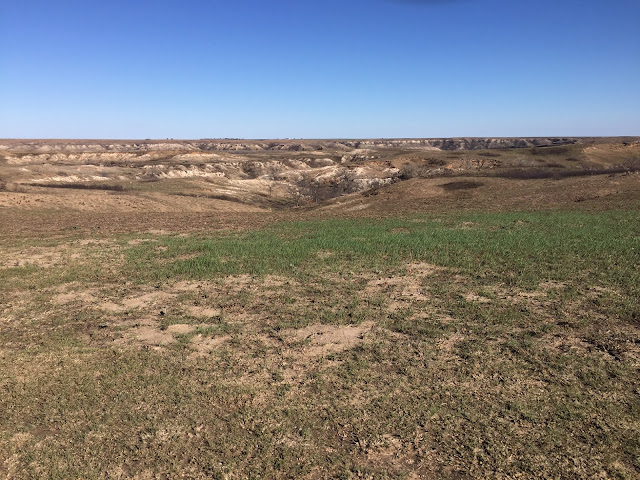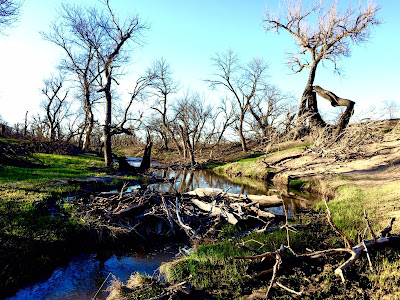Much has been reported about the record Starbuck Wildfire that hit the Red Hills of Kansas on March 6. That day and the week that followed was a disastrous period for several wild fires in the states of Texas, Oklahoma, and Kansas. Many people lost their homes, livestock, and some human lives. It's hard to not overstate the devastation this catastrophe brought to the affected areas. Losses are still being evaluated. While it's not hard to count lives, homes, livestock and miles of fences lost, it's more difficult to assess impacts on nature. The prairie does not suffer much from this event. After all, prairies evolved with fire so enjoy overall benefits in the long run. But, there are some immediate casualties. These include direct mortality of large and small animals as well as some desired trees. Losses of cedar trees which have encroached on the riparian zones as well as uplands of some of the area affected are generally not mourned. Windbreaks made up of cedar rows were lost and this is certainly regretted. But, the death of some of the large lowland hardwoods is very unfortunate. The most notable of these losses include the Kansas state (and world for that matter) record Little (Texas) Walnut tree in northern Clark County. This is the third state/world record of this species lost over the last year due to this fire and the Anderson Creek Wildfire of 2016. But the land and its people will recover. This post follows some of the initial recovery of nature from this natural event.
 |










No comments:
Post a Comment